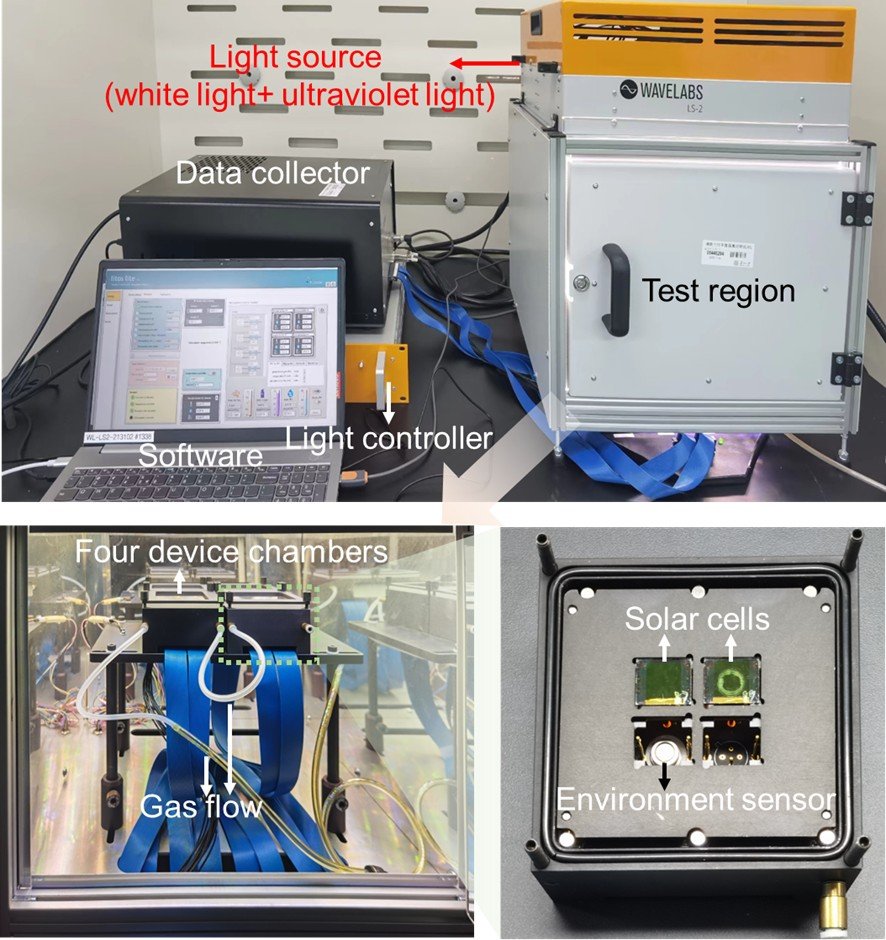Research Paper: Double-side Interfacial Engineering of Hole Transport Layer Enables Efficient and Operationally Stable Colloidal Quantum Dot Solar Cells
Summary
This study presents a breakthrough in improving both the efficiency and operational stability of PbS colloidal quantum dot (CQD) solar cells using organic hole transport layers (HTLs). The researchers introduced a double-side interfacial engineering strategy involving a bottom PbS-MPA layer and a top PTAA-LAD layer, creating a graded interface that improves surface energy alignment and charge transport. They achieved a record PCE of 14.28% and a T90 operational lifetime of ~520 hours, nearly doubling the previous stability record. Litos Lite from Fluxim was used for operational stability measurements under realistic 1 Sun conditions.
Publication Details
Authors: Xin Wen et al.
Journal: Advanced Materials, 2025
PDF Download: View Full Paper
Fluxim Tools Used
Stability measurements were conducted using Litos Lite, Fluxim’s high-throughput light soaking system. The setup enabled precise MPP tracking under controlled light, temperature, and humidity conditions, validating the extended device stability claims.
Key Results
PCE: 14.28% (highest for organic HTL-based PbS CQD cells)
T90 @ MPP: ~520 h in air (unencapsulated)
HTL Stack: PbS-MPA / P3HT / PTAA-LAD
Device Architecture: ZnO / CQD / HTL / Au
Notable Materials: Commercial polymers P3HT and PTAA doped with LAD
Why It Matters
Demonstrates a practical strategy for scalable, stable CQD photovoltaics using low-cost, solution-processable polymers.
Establishes Litos Lite as a trusted platform for long-term MPP stability validation under industry-relevant test conditions.
Sets a new benchmark for ISOS-like stability metrics in CQD-based devices.

